Sizing Guides
How we measure body size
Jacket
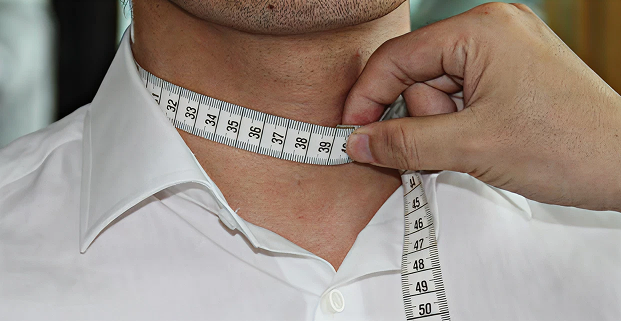
Measure around the middle of neck with one finger put between tape and neck.
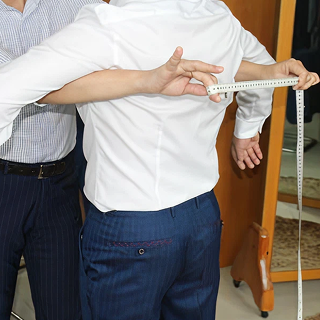
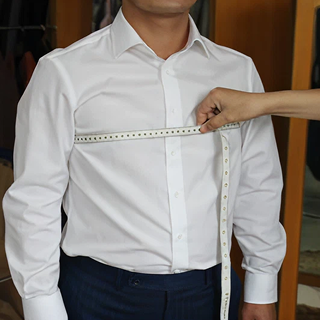
Stand at the front left side of client,stretch your hands back through client’s waist andlift your hands.Measure around the fullest part of chest from back to front (Put one figure between tape and chest to see tape can be slightly moved).Usually add 8-12cmallowance onchest body size.
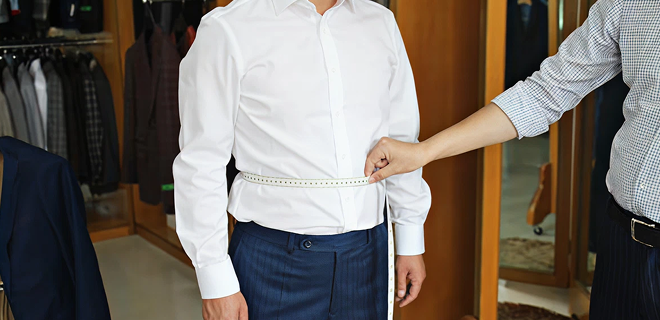
Put your hands on the slimmest part of client’s waist (Measure the biggest part if he has big stomach).Measure around the slimmest part from back to front (Put one figure between tape and chest to see tape can be slightly moved). Usually add 6-10cmallowance onwaist body size.
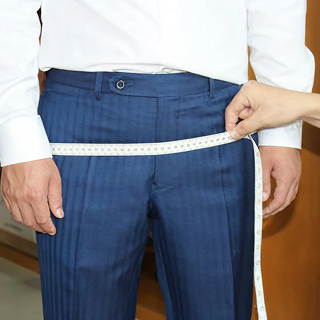
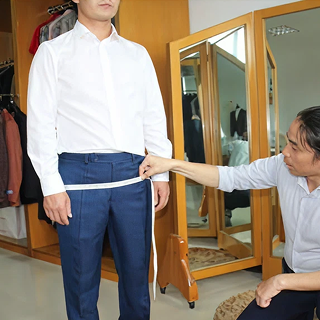
Stand at the side of client,squat to the same height of clients hip,measure the fullest part of hips and ensure the tape is horizontal (Put one figure between tape and chest to see tape can be slightly moved).Usually add 8-12cm allowance on hips as jacket bottomsize.
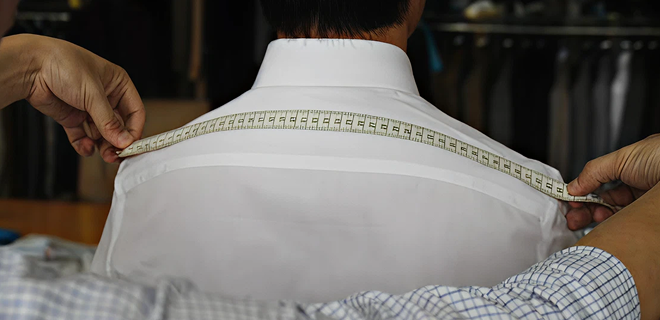
Stand at the back of client to see if he has a sloping,square or unequal shoulder.Measure from the left shoulder point(the shoulder bone) to right shoulder point.Usually shoulder size measured is finished size on jacket
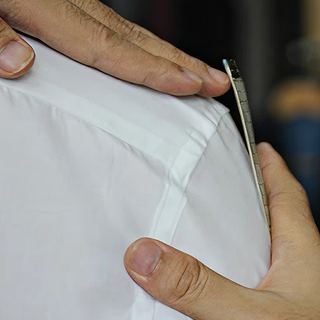
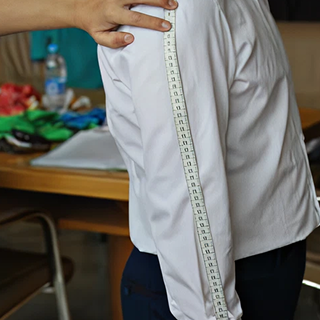
Find the shoulder point first.Put the tape point 2cm above shoulder point (it will be 1.5cm for thin shoulder pad) measure to 3cm above the part between the thumb andindex.Sleeve length relate to client’s dress habits so usually need to communicate with client.(You should use the same shoulder point when measure sleeve length and shouler size)
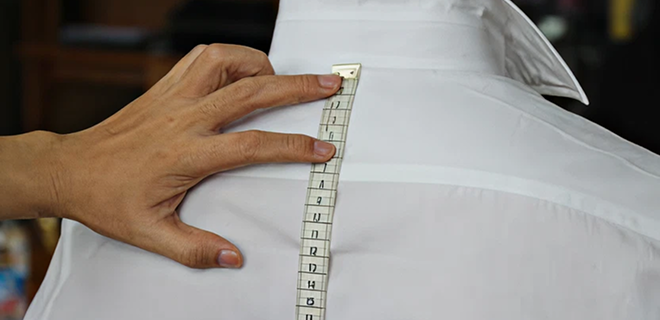
Find the seventh cervical vertebra of client(the bone under the back neck),measure from seventh cervical vertebra to ground vertically and divide by 2 (means thehalf of body length not include head). The final size is standard back jacket length.You canreduce 2-4cm based on standard size if clients like slim fit and short length.
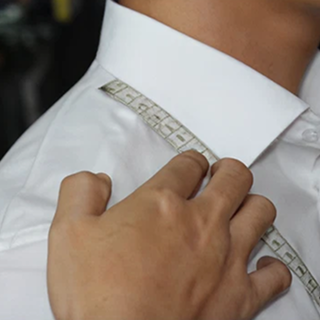
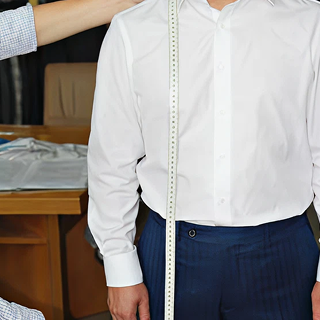
Put your left hand on client’s right shoulder,squeeze your index finger and thumb naturally on his shoulder.The point where thumb and index finger cross is the starting point of front jacket length.Measure from the point to middle joint of thumb is the standard jacket front length (Can also measure to the thump tip or the part between thumb andindex finger depends on client’s preference). You need to consider back length when measuring front length because the difference is usually 3cm.Recheck the front and back size to confirm they are reasonable.
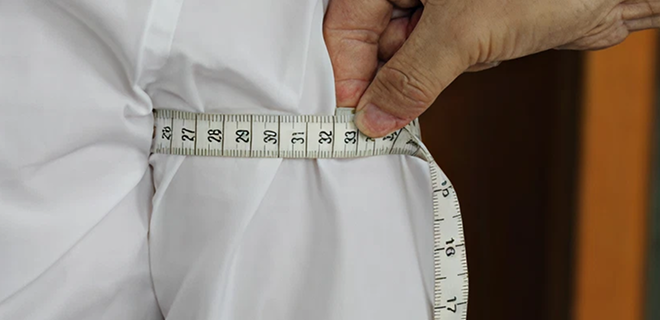
Measure the biggest part of biceps (Put one figure between tape and chest to see tape can be slightly moved).Usually add 8cm allowance on biceps.
Measure around wrist (Put one figure between tape and chest to see tape can be slightly moved). Finished size also relate to biceps.
Pants
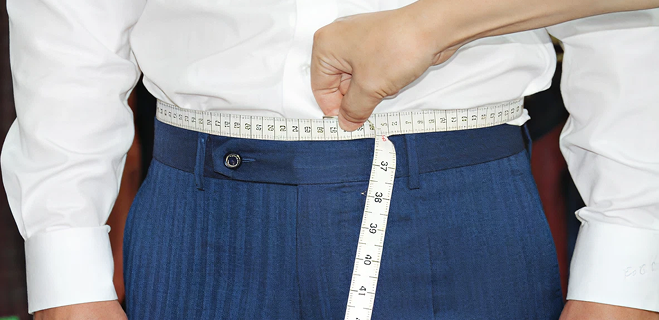
Find the position of belt.Measure above and close to the position of belt but don’t put tape on the belt(Put one figure between tape and chest to see tape can be slightly moved).
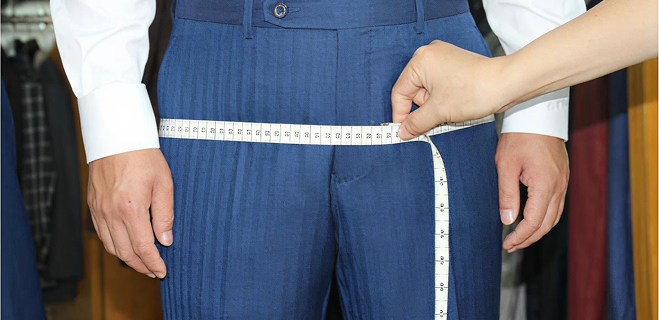
Stand at the side of client,squat to the same height of clients hip,measure the fullest part of hips and ensure the tape is horizontal (Put one figure between tape and chest to see tape can be slightly moved).Ensure nothing inside client’s pant pockets when measuring hip size.Allowance for hip size also depends on the pleats of pants and usually it’s 6-10cm.
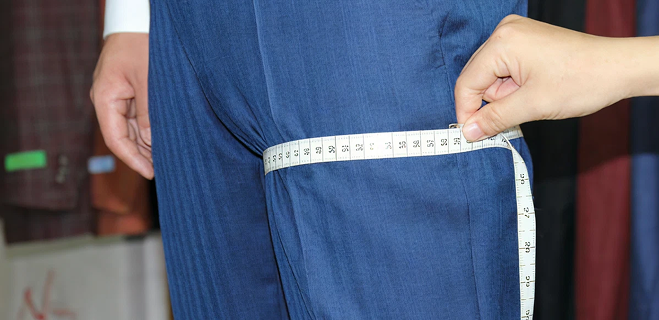
Keep the posture measuring hips and measure the root of thigh (Put one figure between tape and chest to see tape can be slightly moved).Thigh allowance also relate to hips allowance to keep the proportion.Usually add 6-10cm allowance.
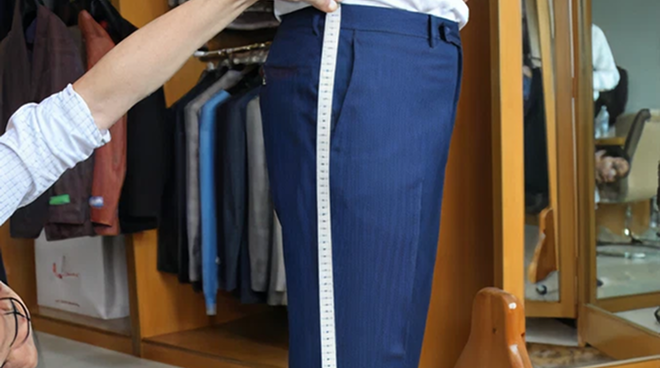
Stand at the left side of client,lift the waistband slightly and measure fromtopedge along outside seam to the position client wants it to be.It’s necessary to ask client the length of his preference.
No need to measure body size.It depends on thigh and cuff size.You can measure calf size for reference.
No need to measure body size but you can only provide finished size according to client’s preference
subscribe to our newsletter
to be updated with all the latest products

